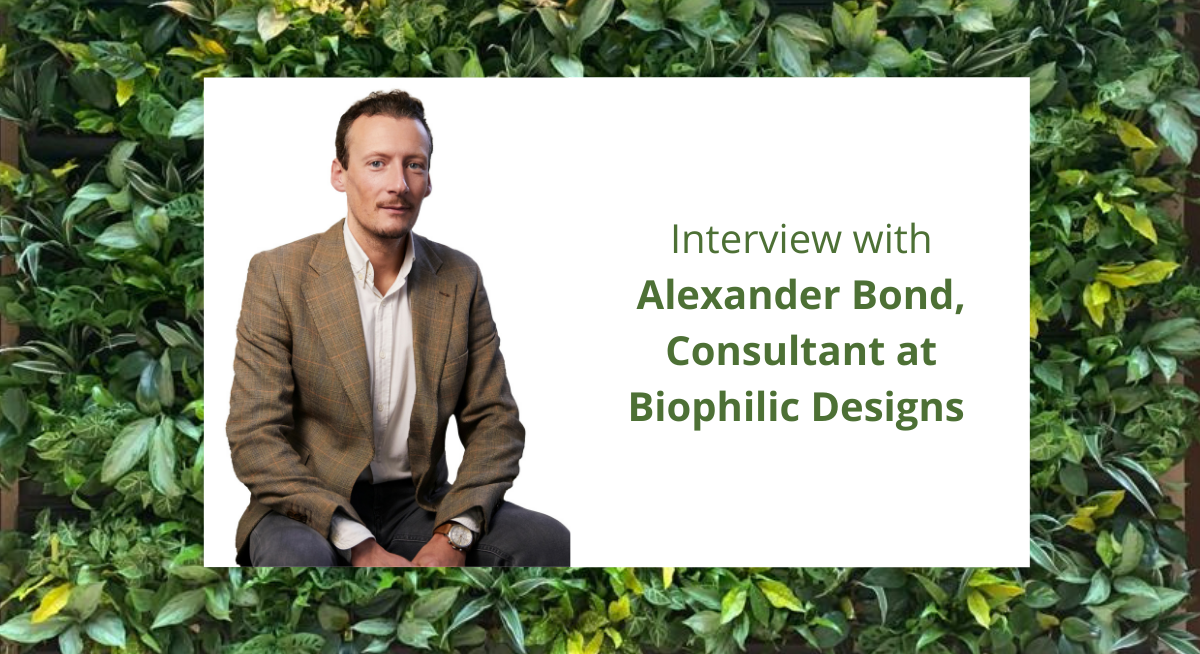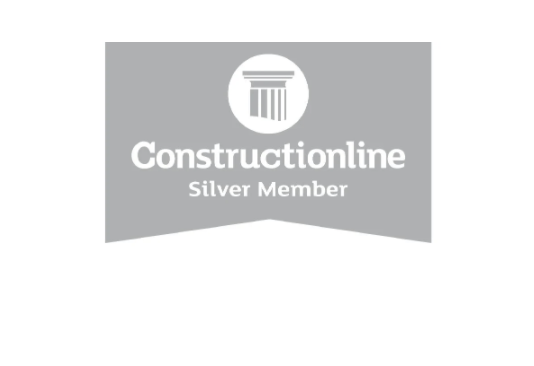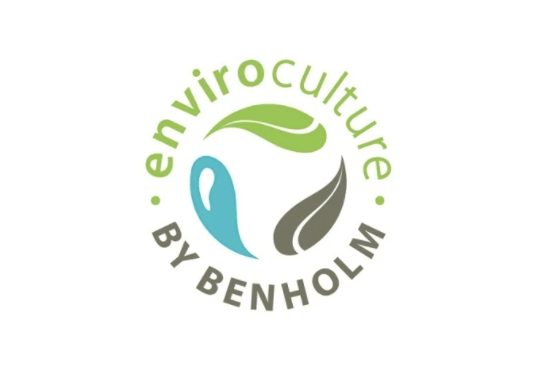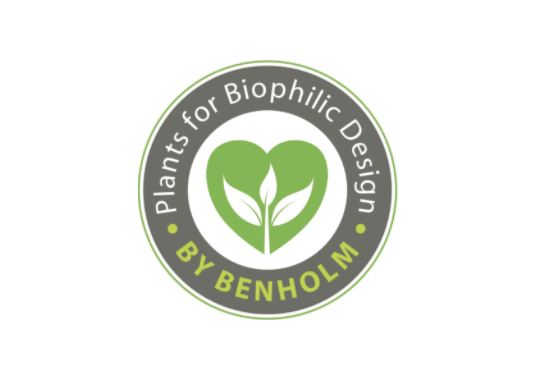
As part of our involvement in the ‘value of biophilic design’ research study, Benholm Group were delighted to speak with a fellow biophilic consultant, Alexander Bond about the importance of biophilic design in the built environment, and to ask his for some quick fixes that everyone can try in their own workspace.
Can you tell us about your professional background and how your interest and passion for discovering the benefits of biophilic design began?
I have been running a specialist Biophilic Design company for the last four years whereby our focus is on innovative office schemes and as Biophilic Design consultants. My personal interest in the subject started way back in my childhood whereby I was encouraged to enjoy the great outdoors by my parents (thankfully no smartphones back then!). Fast forward 20 years and I found myself working in a corporate environment devoid of the most basic connections to nature, i.e., plants, natural lighting, natural materials etc. and it was at this stage that I felt compelled to focus my efforts on raising awareness on the benefits of keeping a connection to nature in the built environment and this was when Biophilic Designs sprung to life.
Tell us why you believe it’s so important to include biophilic design in the built environment?
Because modern human beings have only been living a ‘modern’ lifestyle for a fraction of time when you consider the great timeline of our evolution. If you consider that our hunter-gatherer ancestors were wandering the planet half a million years ago, it is obvious that we are much more predisposed to being outdoor creatures than stuck indoors in front of a screen. It is for this reason that it is incredibly, and intrinsically, important to maintain our connection to the natural environment because it’s quite literally in our DNA.
We have not yet fully adapted to our modern lives so it’s important to design our modern spaces to be more human-centric. There is a wealth of science and data out there explaining why human-centric spaces are better for productivity and the general health and well-being of the people who use them. Though when we think about it, it’s quite obvious, which is why we generally enjoy walks in the park, holidays in nature etc. it’s a natural instinct so to speak.
“There is a wealth of science and data out there explaining why human-centric spaces are better for productivity and the general health and well-being of the people who use them” – Alexander Bond
What do you believe is the future for biophilic design in the workplace?
Our working spaces will hopefully be much more inclined to use natural materials, with lighting systems that are complementary to our circadian rhythm and planting schemes to maintain that connection to nature. I also think that we will (and should) try and bridge the gap between the indoors and outdoors utilising roof space etc. in a further effort to allow humans to roam freely outside of the box.
Tell us about the research study the ‘Value of Biophilic Design’. What is your involvement and what are your main objectives as a biophilic designer?
My role is to act as an independent advisor on the layout with a focus on the use of natural materials in order to create the best possible biophilic environment.
Can you recommend some quick fixes for a novice who wants to introduce some biophilic design elements into their own office or home-office space but doesn’t know where to start?
The best thing about biophilic design is that the first step can be a simple one. This could mean a potted plant or a change of desk to a nice sustainably produced wooden one (getting rid of the unnatural melamine desks that we are all so used to). The first step might just as easily be going for a walk at lunchtime or making a point of being close to a window so we have a vista of the outdoor world. Biophilic design isn’t just one thing, it is a number of different ways in which we interact with the natural environment so it really depends on the space you have and then making small steps in order to create a space which retains an important connection to the outside world.
Are you currently working on any exciting projects that you’d be willing to share?
We are working with two London based tech companies which are due to be complete in mid-June. I can’t wait to share it when it’s finished.














